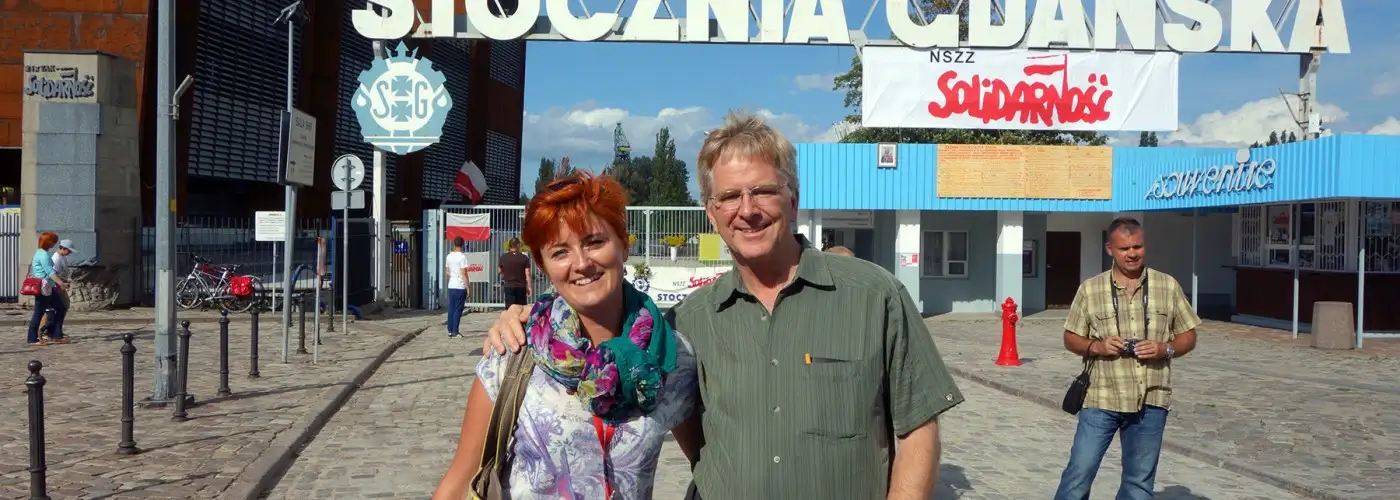For the past 30 years, whenever I’ve been asked to state my occupation at a border crossing, I’ve said, “Teacher.” People may find my TV shows to be entertaining or my guidebooks practical, but my passion has always been to teach, whether it’s about art, culture, or nuts-and-bolts travel skills. My fundamental cause is that good travel teaches people to better understand the world they live in.
In order to be a good teacher, I need to be a good student. That’s why I frequently hire local guides. It’s basically like renting a friend who’s really smart. Then, everything I do, I’m doing with a coach and partner. I always learn something. Last summer, my Portuguese guide Alex took me on a little scavenger hunt through Lisbon’s castle town—built back when nobles needed a safe place within the castle walls—and showed me things I’d never noticed even after 20 years of visits to Lisbon.
Nearly every city in Europe has great guides who are independent businesspeople scrambling to fill their calendars and earn a living. Private guides charge about $100 to $300 for a half day. They tend to cost more in big, touristy cities and in Western European countries. Sure, it’s a splurge. But so is a nice dinner. And if you can split it with a group of people, your cost goes down.
Guides meet you wherever you like and tailor the tour to your interests. I encourage travelers to use guides not only for sightseeing, but also for cultural experiences. For example, after a two-hour Uffizi Gallery tour in Florence, take a coffee break in a cafe, and follow it with an old-town walk featuring Roman, medieval, and modern aspects of Florence. Recently, my Amsterdam guide Frank and I spent an hour enjoying a Reypenaer cheese-and-wine tasting that was just as educational (and, frankly, more fun) than a tour of the Rijksmuseum.
If you’re spending a while in a destination, hire a guide early in your trip. You’ll get an orientation to the city, and you’ll learn time- and money-saving tips. Guides can point out good restaurants, give shopping advice, and provide transportation and sightseeing tips. In St. Petersburg, I learned how to avoid ticket lines at the Hermitage by buying them at the machines in the courtyard. In Istanbul, my guide took me to a local market to shop for spices (instead of at the touristy, overpriced Spice Market).
With its many ancient sights and fine art, Italy is a great place to hire a guide. I love the ancient Roman port city of Ostia, but the descriptions posted throughout are worthless. I commented on this to my wonderful guide Francesca, who taught me the Roman concept of aria fritta—literally “fried air.” The phrase describes any wording that’s, like these descriptions, greasy and heavy but contains nothing of value.
I find that much of what tourists read and hear in Italy is aria fritta. There, it’s especially important to be selective about guides. Random guides cluster outside major sights like Pompeii and the Colosseum, but quality varies. I prefer to book a reputable guide in advance (look for recommendations in guidebooks or online, or ask your hotelier), but if you decide to choose a guide at a sight, first talk to him or her for a bit to make sure you connect.
In Europe, the farther east you travel, the cheaper it is to hire a guide. In places like Prague or Poland, for about $35 an hour, you can get a guide and companion who is expert at giving meaning to your wandering. And if, like me, you are forever fascinated by slice-of-life stories from people who had to live through the Cold War in the Warsaw Pact, it’s even more engaging, as guides artfully weave their personal memories into their time with you.
One Czech guide talked of how, in her youth, she could only dream of drinking a nice cold Coca-Cola. She said, “We couldn’t drink Coke, but we could collect the cans that tourists threw away. I had five cans. My friend had ten.”
Another reminisced about how, with the arrival of freedom and the fall of the Iron Curtain, Russian-language teachers suddenly had to teach English. There were no textbooks, and teachers took cram courses in English so they could teach their students sentences like “Deez eez my bruder” (“This is my brother”). During those first few years, school kids knew more English from watching Rambo movies than their teachers did from taking cram courses.
No matter where I am, local guides make my trip much more fun and educational. This is one of my favorite travel luxuries, as every minute spent with an expert, translator, and friend at my side is filled with learning and insights.
Rick Steves (www.ricksteves.com) writes European travel guidebooks and hosts travel shows on public television and public radio. Email him at rick@ricksteves.com and follow his blog on Facebook.
(Photos: Rick Steves and Cameron Hewitt)
You Might Also Like:
- 10 Authentic Ways to Travel Like a Local
- How the Sharing Economy Opens New Doors for Travelers
- The Best Way to Store Your Luggage on a Layover
We hand-pick everything we recommend and select items through testing and reviews. Some products are sent to us free of charge with no incentive to offer a favorable review. We offer our unbiased opinions and do not accept compensation to review products. All items are in stock and prices are accurate at the time of publication. If you buy something through our links, we may earn a commission.
Related
Top Fares From Columbus, OH
Today's Top Travel Deals
Brought to you by ShermansTravel
Shop and Save with Country Inns...
Patricia Magaña
 Hotel & Lodging Deals
Hotel & Lodging Deals
$229 -- Chicago: Discounted Rates and...
Francesca Miele
 Hotel & Lodging Deals
$229+
Hotel & Lodging Deals
$229+
$188 -- Honolulu: Save on Oceanview...
Abigail Lamay
 Hotel & Lodging Deals
$188+
Hotel & Lodging Deals
$188+





